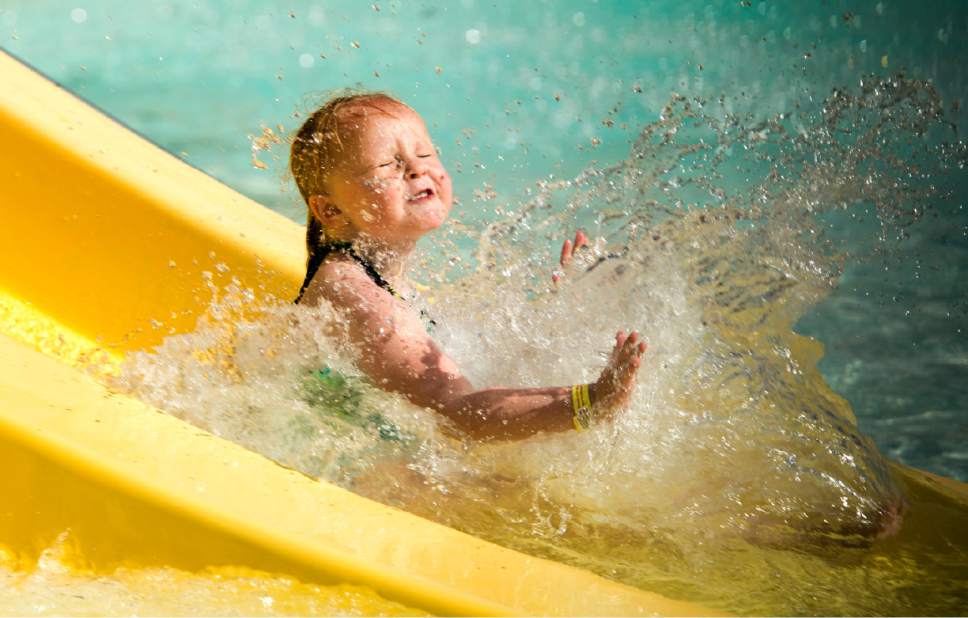This is an archived article that was published on sltrib.com in 2017, and information in the article may be outdated. It is provided only for personal research purposes and may not be reprinted.
As the thermometer surged into the low 80s on Monday, some weather monitors sighed with relief.
"It's a little cooler today. It's a relatively low-risk day," said Christine Kruse, a meteorologist with the National Weather Service.
The temperature Sunday, which reached a high of 97, was the second hottest June 4 in Salt Lake City on record, according to NOAA data. More near-record temperatures are forecast for later this week, which could pose a health risk for the most vulnerable people.
"If someone's sensitive to the heat, typically elderly or children, they need to make sure they get enough hydration and have a way of cooling themselves down," Kruse said.
At Avenues Preschool, owner Veronica Nelson closely monitors the air quality and heat indexes each morning. On particularly hot days, she limits recess to increments of 20 minutes at a time so students can cool off in an air-conditioned building.
"The strenuous activity they do depends on how warm it is," Nelson said. "We wouldn't do any sort of running."
For those who don't have air conditioning at home, the Salt Lake County Health Department offers a list of cool zones, such as libraries, senior centers and health centers, where anyone can go to take a break from the heat.
"It happens frequently that people are hiding away from the heat in the library," said Suzanne Tronier, manager of the Millcreek Community Library, one of the cool zones.
Salt Lake County Aging and Adult Services is seeking donations for free-standing fans, which it delivers every summer to seniors who don't have air conditioning and cannot move somewhere else to find relief.
Forecasters expect the heat this week to be more uncomfortable than it is dangerous, with only the most vulnerable people, like seniors and children, warned to take extra precautions.
Part of the reason for the moderate relief is that while the midday sun may scorch, the nights soothe.
"Yesterday, we were one degree from the record high temperature. But we cooled off pretty good overnight," said Randy Graham, meteorologist in charge at the National Weather Service in Salt Lake City.
That diurnal ebb and flow allows body temperatures to stay at healthy levels. So far this year, the temperature has consistently dipped to 70 degrees or lower, and it likely will continue to do so throughout the week, according to the Weather Channel.
But summer nights may not stay cool for long.
Since 2010, summers in Salt Lake City averaged 24 nights when the temperature was at 70 degrees or higher, nearly five times the average number in summers during the 1970s.
That trend could be dangerous. According to data analyzed by the National Weather Service, there is a correlation between extreme heat and emergency room visits.
"Heat's a significant issue," Graham said. "It's the No. 1 weather-related killer in the United States."
That heat is increasing water levels in northern Utah, such as in northeastern Cache County, where the Logan River above Cutler Reservoir was to be under a National Weather Service flood warning until midafternoon Thursday.
And, just in time for the weekend, a cold front will move in and drop temperatures by 20 to 30 degrees.
Twitter: @MathisWilliam





